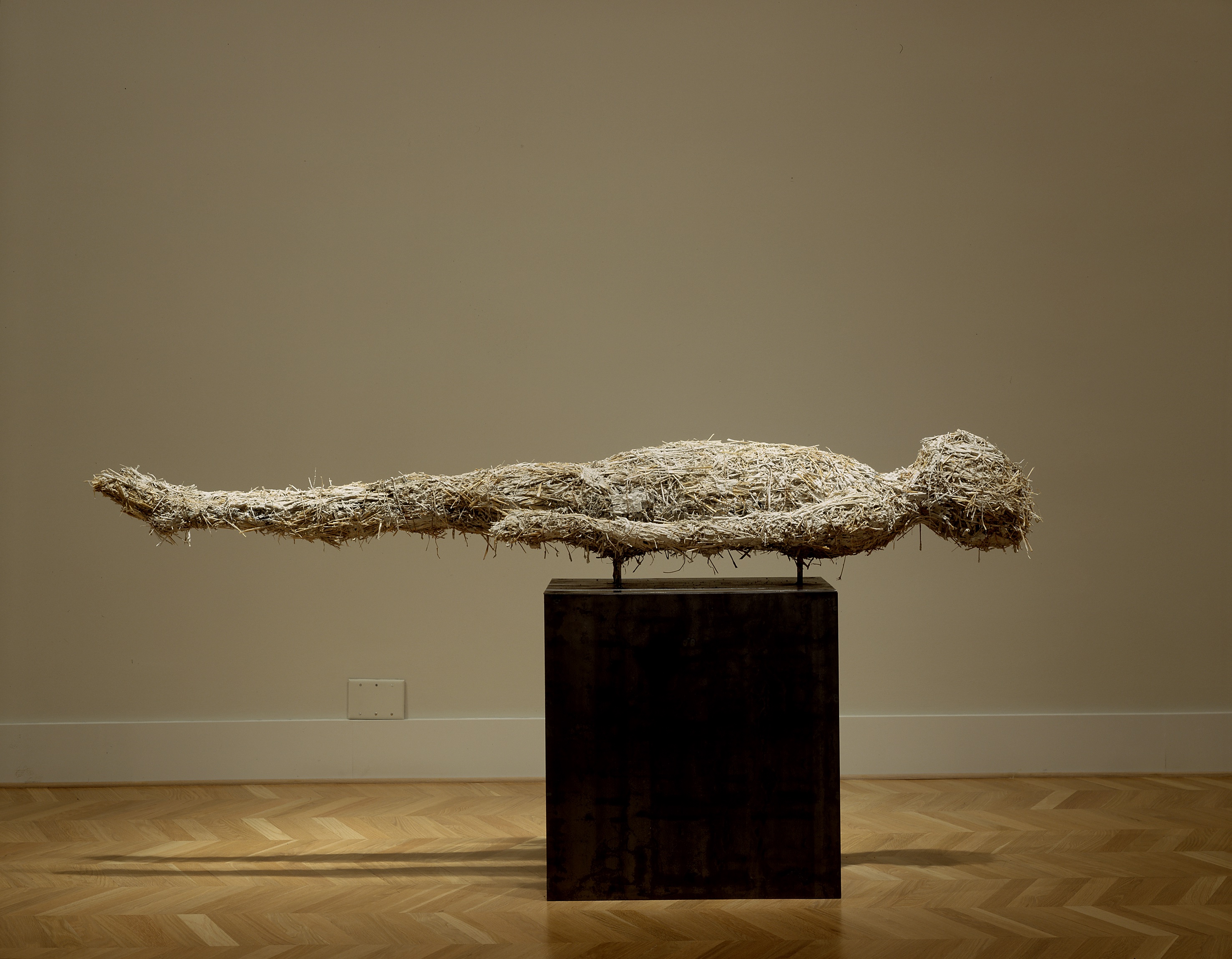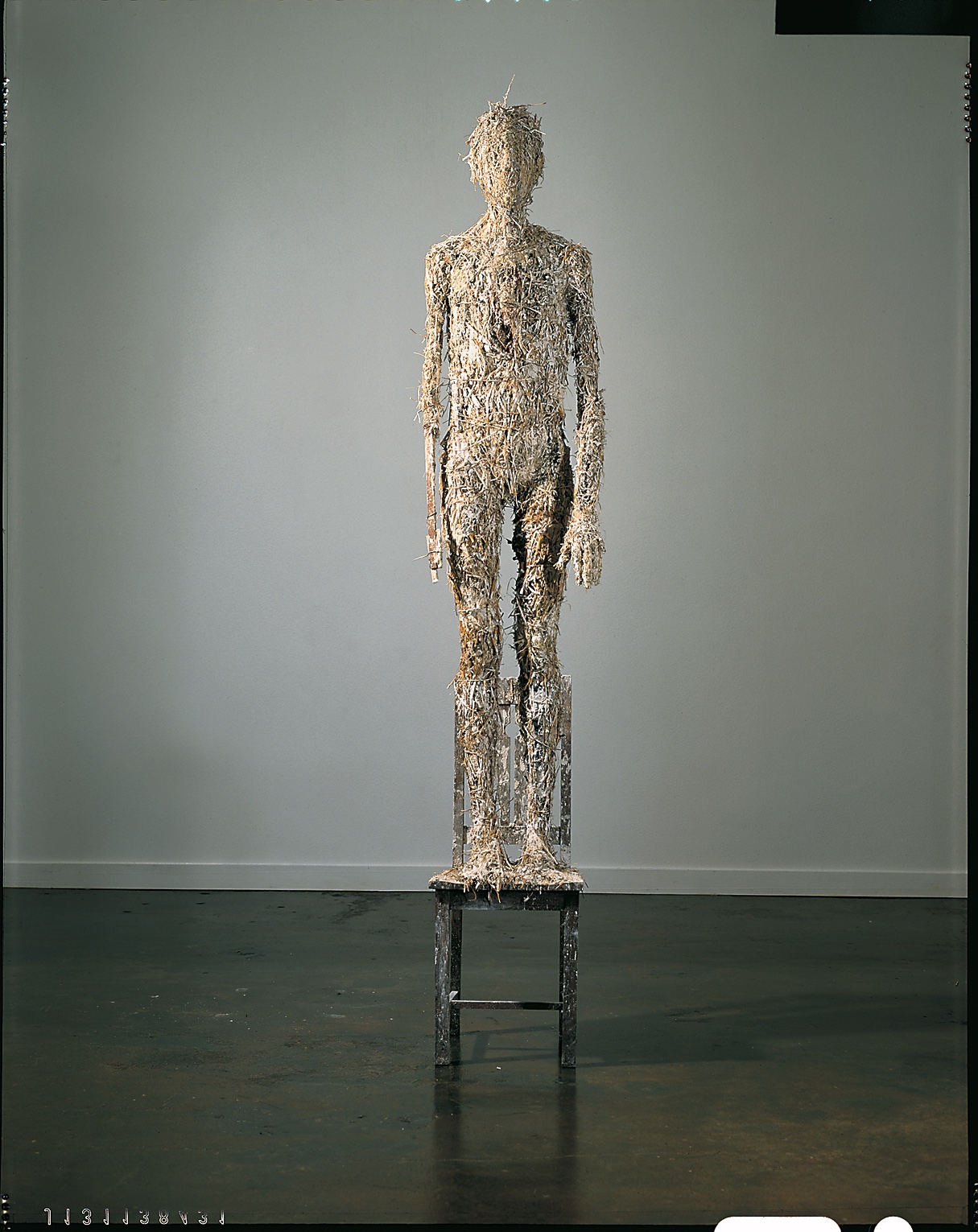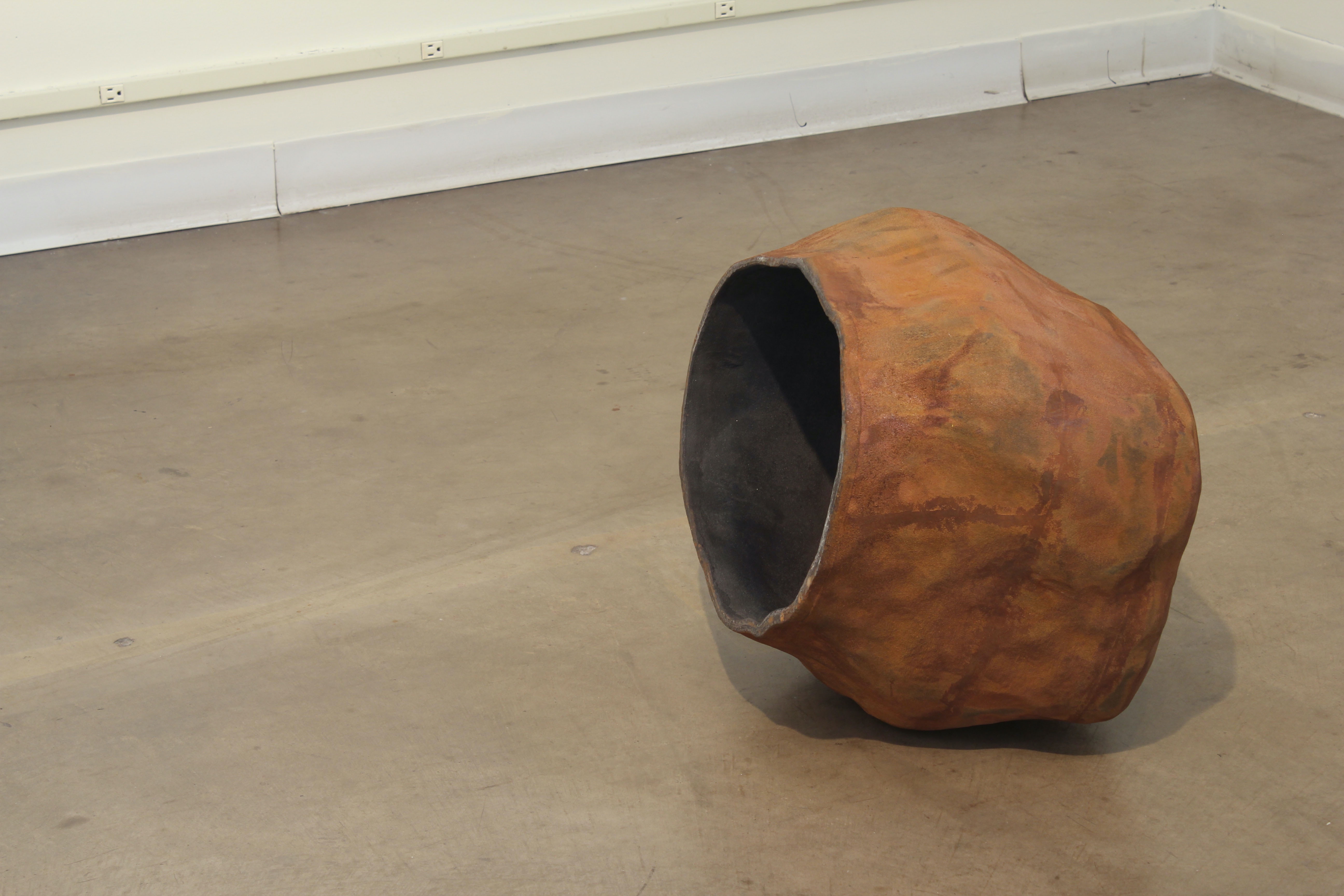A slight Looking Away
Marius Lehene
Askew
… And my thoughts are all sensations.
I think with my eyes and my ears
And with my hands and feet
And with my nose and mouth.
Fernando
Pessoa, The Keeper of Sheep
The poem, a thousand times broken, presses and pushes to construct itself, to reconstruct, for one immense unforgettable day, in order to, through everything, reconstruct us.
Henri Michaux, Thousand Times Broken
At the center of
our retina, vascular and neural wiring bifurcates revealing the highest density
of photoreceptors, the fovea. Such morphology brings clarity to what is seized
in central gaze. Stereoscopic vision makes this clarity translatable into
three-dimensional perception, allowing us to conceive objects as extended
spatially and external to us. This conception sediments. A tight relationship develops
between it and the fixed stare characterized by clarity. James Sullivan’s figures
resist such clarity. Fragments or full bodies, Sullivan’s figurative sculptures
present themselves as silhouettes, similar to peripheral - rather than central
- vision.
A figure of straw
and plaster, whose surface contains as much air as solid matter, floats. It conjures
adventitious roots, nests, and floating islands. It also suggests an ambiguous
medium of immersion: water, surely, but perhaps the symbolic flow of being, of
aging, of sleep and death. Forces and counterforces balance quietly… Another
figure stands on a chair, right arm stiff as a stick, and of a stick, left palm
raised apprehensively. Stiffness and apprehension may be body’s anticipation of
a leap, expressing an anxiety as ambivalently inner to the sculpture as
interpretation is to viewers. What becomes apparent in Sullivan’s figures is a
continuity between inside and outside that matches continuity in the stream of interpretations.
Highly textured, material and tactile, the surface-region of the figures becomes
a zone of uncertainty mediating body and surroundings. Into these fuzzy contours
one nevertheless recognizes a friend’s, our own, way of carrying a body. But
the very possibility of this discovery is available only in absence of clarity, like an
afterimage occurs only when we begin to look away. It is hard to tell if the
discovery is a feature of ourselves or of reality. Whereas clarity comes from a
fixed gazing proper to a worldless subject detached from physical reality, we are
a life form with a world and continuous
with that world. Sullivan’s figures address us as such. They are akin to peripheral
vision hazy apparitions that emerge only when the point of fixation is
elsewhere; whether their expression is real or an artifact of our senses
remains undecided. As silhouettes, these works are created in a two-pronged
act. The act is one of making and simultaneously of a slight looking away, a
shift towards inaction as far as intentionality is concerned. And if this slight
looking away is a different way of looking, it also discloses an altogether
different world. This is a world where the artist thinks through the act not before it, one where we do not entirely
differentiate ourselves from our “outside”, a world as fuzzy as the surface of
Sullivan’s figures. Such a world is vibrant precisely as a tangle of uncertainty and certainty and overtly co-constitutive
with us.
Standing or
floating, Sullivan’s figures remind us of their - and our - familiarity with a
world, familiarity not derived from ideas but from which ideas derive. In the
studio, which Sullivan prefers messy, his own ideas emerge “out of the corner
of the eye”. In central vision ideas would have been clear, simple, and simply
representational. The world would have been kept at a distance. However,
Sullivan’s ideas do not come out of purely rational reckonings but out of
circumstances and experiments in which possibilities materialize from things
entering relationships with other things, other experiences, with memories,
smell, touch, or sound. The ensuing artwork is to some extent logical,
constructed, sustained by conscious thought. Simultaneously the work is opaque,
blind, developing from an impulse that moves the arm before conscious thought.
*
Reticence
Outside and inside are both intimate – they are
always ready to be reversed, to exchange their hostility. If there exists a
border-line surface between such and inside and outside, this surface is
painful on both sides. […] Intimate space loses its clarity, while exterior
space loses its void, void being the raw material of possibility of being.
Gaston Bachelard, The Poetics of Space
What do I know
before I speak? That I instantly learn the iron vessel can hold one body whole.
That it is heavy but would nevertheless float on water, waves close to its lip,
leaping in when wind picks up. That I see in its shape the old skep-hive my
grandfather used to collect wandering swarms of bees; that bees in those swarms
never stung... That looking at the pot’s surface makes my palms tingle. That
touch is fragmentary and brings along mutual vulnerability; the pot can burn me
but, also, I can tip the thing over. That I can sound the iron vessel and that
its music will speak of the knock, of its own weight, and of the density of air
between us; only it wouldn’t be music to the pot itself… That all space is near.
That while death draws nigh, I and it will never be on the same side of this
urn’s walls. That bodily and intellectual learning is like a ground where excavation
goes in both directions.
Inspired by
ancient Korean funerary urns, Sullivan’s death pots engage the common traditions
of sculpture and pottery. Evoking other pots, they also evoke the body. They
not only recall, visually, church bells - scenes from Andrei Tarkovsky’s 1966
film Andrei Rublev come to mind - butare iron pots. One could probably ring
them. Large enough to contain an adult-size human and likely just as heavy,
they look paradoxically light. When they deviate in form from the bell-shape,
as does Hive, 2013, they appear like sounding
undulations of a surface. Synesthesia of sight and hearing looms. The walls of Hive look like they vibrate under the
effect of invisible forces. Acoustically, we feel - as an absence, but
nevertheless - that this vibration should generate sound. Hive’s clay-like iron oxide outer color makes it protrude
ostensibly. Its charcoal-black inside recedes, creating the feeling of an
indefinitely large internal space. Tactile outside feels here, at hand; inside is both visually and narratively there, unknown.
Being has always
been associated with inside and non-being with outside. The funerary urns in
Sullivan’s practice are that, but they also invert the ratio. They are vessels
meant to contain death, life kept on their outside. The balance is unstable
though, it flips; the vessel as body associations persist. “Formal opposition
is incapable of remaining calm”, as Bachelard wrote, it is obsessed with the metaphor.
It is as if we code perception in an oppositional way, contradiction a feature
of our thinking not of the world itself. The pot stands in for the body, for pneuma – the breath, and at the same
time it separates its content from us, living, bodies. If it could speak, its
reticent whisper would involve an ambivalent conjunction – to be and not to be; world and earth… But the pot keeps silent,
able to do so precisely because it has something to say.
*
 Float, 2002
Float, 2002 Plaster, straw, pigments, steel
14 x 84 x 14”

Figure on Chair, 1996
Plaster Straw Wood Pigment
93“ tall
 Hive, 2013
Hive, 2013 Cast iron
20 x 20 x 18”
BACK - NEXT